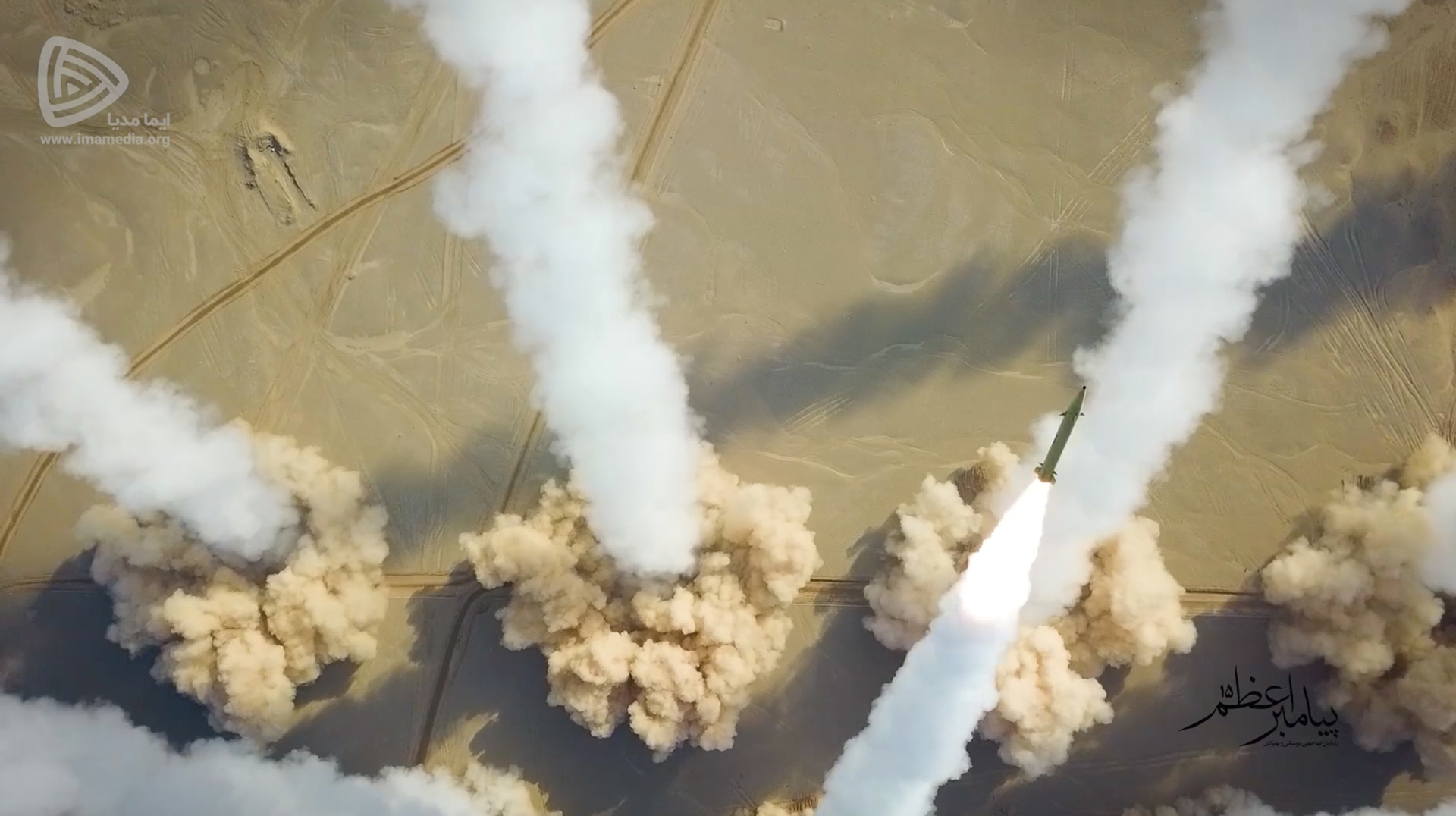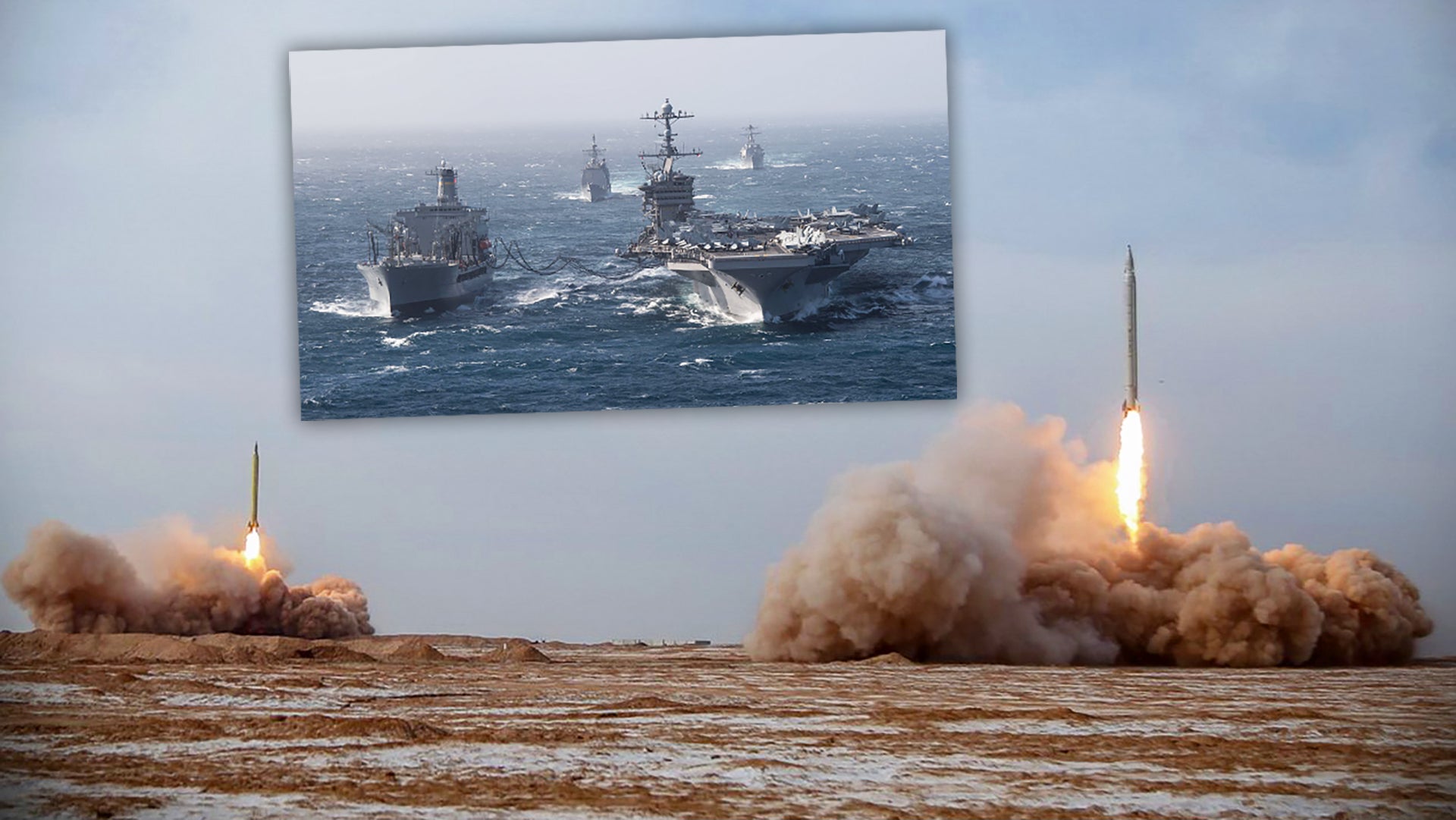Iran’s testing of a variety of medium-range ballistic missiles yesterday has caused a lot of misplaced fear and misunderstanding. The launch, which was part of the country’s “first phase” of its Great Prophet 15 exercise, was not a surprise and saw ballistic missiles traveling over 1,000 miles into the Indian Ocean in a claimed anti-ship ballistic missile test. The missiles splashed down 100 miles from the Nimitz Carrier Strike Group that has been operating in the region and 20 miles from another unidentified ship. Iran claims it destroyed a floating target in the tests, although this has not been confirmed in any way.
Still, the headlines and reported claims were ominous, indicating that there was some threat to the American armada. That simply was not the case. The test appears to have been at least partially another ruse by Iran’s Islamic Revolutionary Guard Corps (IRGC) to make its capabilities look more robust than they actually are and to supply fresh propaganda for both domestic and international consumption.

While the sea is a very big place and 100 miles is not a grand distance, relatively speaking, Iran’s missile test doesn’t prove these missiles pose a threat to the Nimitz or any other ship for that matter. The exact location of a carrier strike group can be obtained in many ways. If you are an individual or country, you can often track them via low-resolution commercial satellite imagery. This doesn’t offer precise targeting capabilities in any way and only provides delayed, general positioning information, with the possible location of the ships in question growing in a circle with every passing moment. In other words, a six-hour old image of a carrier strike group that can travel at a maximum of around 30 knots offers a maximum ring of uncertainty measuring roughly 180 nautical miles in any direction, although the heading the ships are traveling in the image can help a bit with some predictability. In reality, normal operating speeds are about half that or so, so for ease of the math, let’s call the actual distance of uncertainty to be 90 nautical miles. The more recent the image, the smaller the probability of error. It’s just simple math.
There is also open-source aircraft and vessel tracking software that can, in some cases, indicate the general areas where naval armadas are operating.
If you are the government of a country, such as Iran, you have many more tools at your disposal, including a vast intelligence-gathering apparatus that includes human and electronic intelligence sources, as well as cyber capabilities that can help pinpoint a vessel’s whereabouts. On a military level, you also have long-range maritime patrol aircraft with radar and electronic support measures that can search for a carrier strike group over vast distances via active and passive detection methods. This is in addition to your own naval assets, both declared and undeclared, that operate continuously throughout the region and can relay coordinates of vessels of interest. For a U.S. carrier strike group, Iran likely has multiple vessels working to keep track of it at any given time.
As such, getting regular fixes on a carrier strike group in your own general region is not some high-end task, especially during peacetime when a whole slew of measures are not put in place to help limit detection. Everything gets far more complicated and deadly when the strike group is actively defending itself. So, just because some ballistics missile fell within 100 miles of the Nimitz, that does not mean the Iranians have the ability to actually engage a carrier directly with their ballistic missiles.
In order to do that with a high degree of reliability, the missile should be capable of receiving midcourse updates via third party targeting platforms, such as ships, aircraft, or satellites. Then, they actually have to be able to find, lock, and track a maneuvering target on their own during their terminal phase of flight. This is no easy task considering the speed at which they are traveling and the atmospheric effects on the maneuvering warhead itself.
Simply put, it is a far more complex kill chain than most realize. Still, to the average person reading a headline about ballistic missiles falling within a hundred miles of an American supercarrier, it may seem that way.

Even hitting a floating static target far out to sea is a different reality than one that is moving and maneuvering. Iran is mass-producing maneuvering warheads and has used them in anger to great effect. But being able to hit a precise fixed target on the ground or maneuvering during flight as a countermeasure to anti-ballistic missile systems, is not the same as targeting and successfully engaging a moving target a thousand miles out at sea. The missiles would also require their own onboard targeting sensors that are capable of working under the extreme terminal phase of flight conditions and the related guidance package and software needed to leverage those sensors.

Iran has claimed that it has anti-ship ballistic missile capabilities before, but for shorter-range ballistic missiles that are more adept at engaging targets in the Persian Gulf and northern stretch of the Arabian Sea, with the support of throngs of targeting sensors and other capabilities that are in place there, as compared to a target sailing 1,000 miles out into the open ocean.
All that being said, it is only a matter of time until Iran does develop this capability, which may have been what this test was at least partially about. They have watched how China’s anti-ship ballistic missile capabilities have changed the calculus for U.S. Navy operations in the Pacific Theater, at least during wartime, and have come to underpin Beijing’s anti-access, area denial strategy. There is no evidence that this day has come, or is even all that near, for Iran. The exact capabilities of China’s own long-range ASBM capabilities are only emerging now, after years of development and missile production.
In addition, the Nimitz Carrier Strike Group’s Aegis-equipped escorts have the ability to shoot these and even more capable ballistic missiles down, although just how robust that capability is, which is now multi-layer in nature, remains to be seen.

So, in the end, Iran got a two for one here. They got a high-profile test of their medium-range ballistic missiles that flew their complete down-range profile. This will provide good data on how to improve these weapons in the future. At the same time, they made it look like they can threaten a U.S. Carrier Strike Group 1,000 miles from Iranian shores with this capability, which they cannot. Of course, they did this at a time of extreme tensions and saber-rattling with the United States, so added value there.
Above all else, this is another reminder of how Iran remains a capable asymmetric warfare opponent, both on the traditional battlefield and on the information battlefield.
Contact the author: Tyler@thedrive.com
